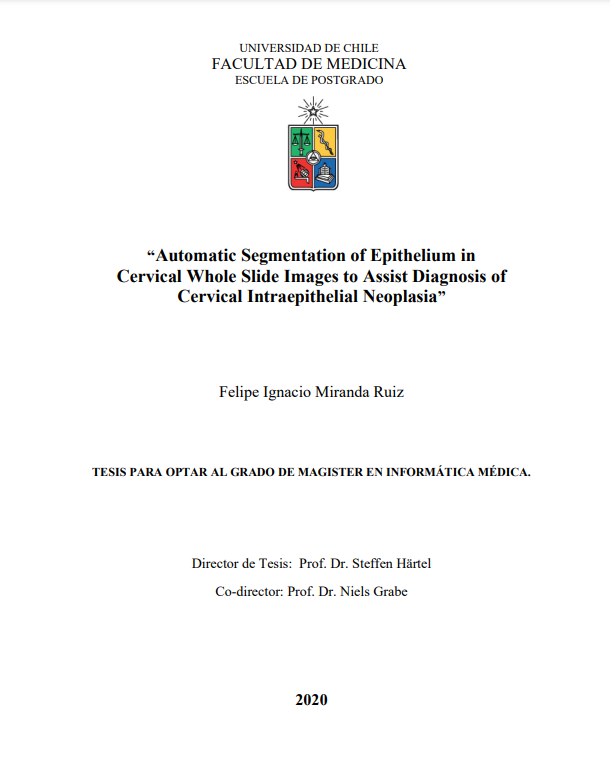Automatic segmentation of epithelium in cervical whole slide images to assist diagnosis of cervical intraepithelial neoplasia
Licencia: Creative Commons (by-nc-nd)
Autor(es): Miranda, Felipe
Cervical Intraepithelial Neoplasia (CIN) is a precancerous state of the cervix, and the correct diagnosis of its level of severity (CIN grade) allows to determine patient treatment and prevent invasive carcinoma. It is diagnosed from histological samples by visually estimating the percentage of epithelial width covered by neoplastic cells, although the subjective nature of this estimation has proved to cause high levels of inter-observer variability in the diagnosis. Immunohistochemical (IHC) stains have been used to increase inter-observer agreement, and to perform immune cell analysis for cervical cancer research, but the manual quantification of IHC is still prone to subjective interpretation, and unfeasible to implement on a large scale. Digital pathology enables the digitalization of samples into Whole Slide Images (WSI), using tissue scanners that apply the principles of light microscopy. Because CIN occurs in the epithelial tissue, the first step towards a computer-assisted quantification of IHC stains would be to automatically segment the epithelium in WSIs. Deep Learning (DL) has been used in digital pathology to detect histological regions with lesions, quantify biomarkers and segment tissue types. In digital pathology, image properties such as color, brightness, contrast or blurriness may vary based on the scanner, the tissue preparation and the technician handling the equipment. The application of DL for image analysis in this field must be robust to image variability, and deliver consistent results regardless of the origin or handling of the image. Stability Training (ST) was evaluated as a potential method to increase robustness of DL models in digital pathology. During model training, ST generates a distorted version of the training images, and penalizes differences between the prediction of the original image and the prediction of the distorted version. This work evaluated if the application of ST could improve the DL models' robustness to image variations caused by the use of different IHC stains and different scanners, and the results obtained suggest that it makes DL models better at handling WSIs with image variations.
[Santiago: 2021]
Compartir:
Una vez que el usuario haya visto al menos un documento, este fragmento será visible.


